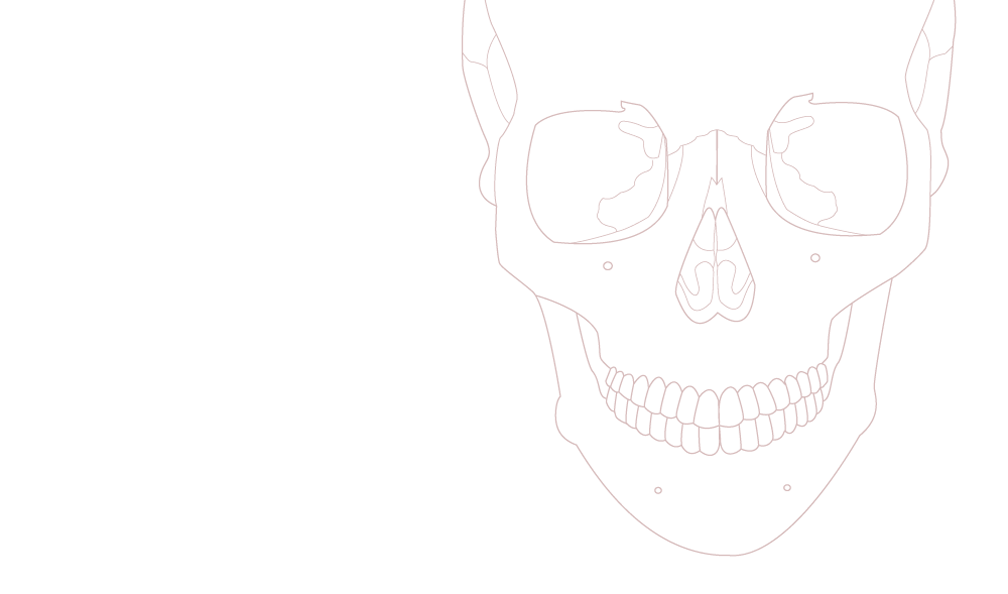
InvisibleEar©
ABOUT:
The InvisibleEar app describes the anatomy of the petrous temporal bone which houses the structures of the ear. In various learning resources the cochlea and semi-circular canals are illustrated to be separate structures instead of represented as negative spaces containing structures within the bone. The labels list out where all the important nerve canals (IAM, greater petrousal canal, etc).
GET THE APP:
Download the InvisibleEar iOS app from iTunes:
The augmented reality is activated by the GLYPH or the 3D PRINTED MODEL and will not work without one or the other.
GET THE GLYPH:
DOWNLOAD the following PDF images (glyphs) and instruction package (HERE) to activate the Augmented Reality!
*Please note that only the PETROUS BONE GLYPH will work on the ipad mini
If you would like your own glyphs on business card size or post card size 32pt
paper please make a request through the contact page and they will be shipped
free of charge. They make great fridge decorations when they are not in use (fyi).


OR GET THE 3D PRINTED MODEL for the full the educational experience and value of the app, as well as learn the exact structures housing the organs of the ear using a tactile physical model.
View the PRICE LIST HERE and make a purchase request for the 3D printed anatomically correct petrous bone model on the contact page and a sales representative ObjexUnlimited will contact you for payment and confirmation shortly.
The InvisibleEar© 3d printed model was created from real life raw CT data of a human petrous temporal bone. Anatomical accuracy is extremely important in medical education.
To read more about the research behind this app go to the portfolio page: Visuo-haptic learning of the Inner Ear.
DEMO VIDEOS
Demo video of augmented reality InvisibleEar© app with petrous temporal bone model
Demo video of augmented reality app with textbook illustration of cochlea.
DESCRIPTION:
The InvisibleEar© operates with a downloadable pdf image (glyph) or a physical 3d printed model. InvisibleEar© is an augmented reality enabled teaching tool, which demonstrates the complex structure of the human inner ear, using CT data from a human temporal bone. With this app you can see the negative space of the inner ear within the human petrous temporal bone.InvisibleEar© is suitable for hearing specialists, health care professionals and students from high school to medical school. Use this app on any non-retina or retina iPad with a camera.
OVERVIEW:
The inner ear has a complex shape, buried in the dense bone of the petrous temporal region. It is a notoriously challenging subject of anatomy to learn and often thought to be a separate structure rather than a negative space within bone.The development of Augmented Reality (AR) technology provides an opportunity to create a digital graphic representation of this negative space, combining a digital real-time animation of the inner ear with an accurate anatomical physical model of the petrous temporal bone. This combination provides the ultimate visuo-haptic learning tool, providing accessible structural and functional information on this difficult subject of human anatomy.
FUNCTIONALITY:
To use InvisibleEar©, point the iPad camera at the glyph or model and press the onscreen buttons to reveal or hide details. Drag a slider to change the transparency of the bone to reveal what is hidden underneath! Push one button to view all the internal space, and another to view only the bonylabyrinth that contains the cochlea and the semicircular canals. Learn and quiz yourself on the areas of anatomy by interactively displaying labels describing the structures of the inner ear.The InvisibleEar© is the ultimate in hands-on learning.The InvisibleEar© operates with a free downloadable pdf image (glyph) or a physical 3d printed model available for purchase at www.andreazariwny.com
PAPERS:
Visuo-Haptic Learning of the Cochlea: Using physical optical glyphs with Augmented Reality., ed. Katina Michael. IEEE Technology and Society Magazine
Visuo-Haptic Learning of the Cochlea: using physical optical glyphs with augmented reality of the InvisibleEar., ed. Vaibhav Garg, Dee Weikle. ACM SIGCAS Computers and Society. Volume 44, Issue 2. July 2014.
CONFERENCES:
International Association of Medical Science Educators (IAMSE): Poster and E-demo presentation, Jun 8th-11th 2013
International Symposium on Technology and Society (ISTAS): Plenary presenter, Jun 27th-29th 2013
Association of Medical Illustrators (AMI): Vesalius Scholar presenter, Jul 17th-20th 2013
Peel Science Animation Festival: Keynote presenter, Feb 22nd 2014
Apps for Health: Rising star tech demo, April 25th 2014
American Association of Clinical Anatomists (AACA): Tech Demo presenter, June 9th-12th
SCREEN SHOTS





